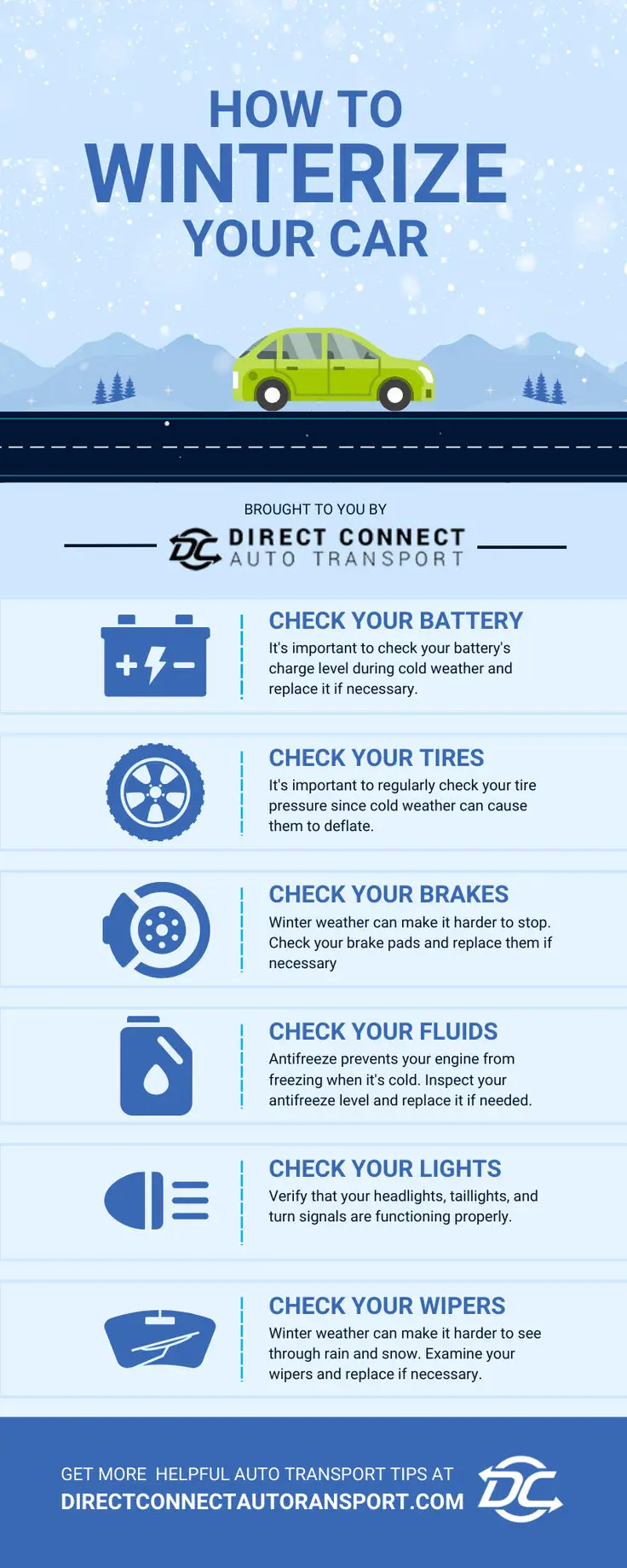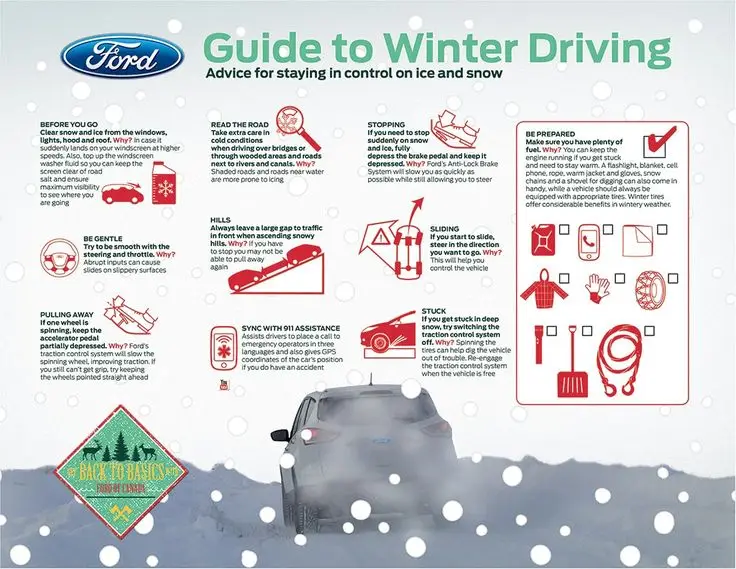Introduction to Winter Car Preparation
The winter season brings with it a range of challenges for drivers. As temperatures drop and conditions worsen, ensuring a vehicle is ready for cold weather driving becomes crucial. Proper winter car care involves a series of maintenance checks and preparations aimed at enhancing safety, performance, and reliability throughout this demanding season. Neglecting these vital steps can lead to significant risks, including breakdowns, loss of control on icy roads, or even accidents.
Winter weather can severely impact various aspects of a vehicle’s operation. Cold temperatures can cause tire pressure to drop, battery performance to diminish, and fluids to thicken, impairing their effectiveness. For instance, antifreeze mixes may become less efficient, leading to engine overheating or freezing issues if not adequately maintained. Moreover, inadequate visibility due to snow or ice accumulation can contribute to hazardous driving conditions, underscoring the importance of ensuring that windshield wipers and defrosters are in optimal condition.
In addition to these mechanical concerns, drivers must also be aware of the potential for unexpected weather changes. Being unprepared for sudden snowstorms or extreme cold can result in dangerous situations when on the road. Therefore, planning ahead is essential. This includes checking emergency supplies and ensuring vehicles are equipped with items such as blankets, food, and water in case of a roadside emergency. Regular maintenance checks, such as ensuring that tires have sufficient tread, can further bolster a driver’s peace of mind.
Ultimately, winter car preparation is an investment in safety and peace of mind. By taking the necessary precautions and implementing winter car care strategies, drivers can navigate the winter months with greater confidence, knowing their vehicles are suited to handle the unique challenges posed by cold weather environments.

Inspecting Your Tires
As winter approaches, ensuring that your vehicle is equipped for cold weather driving becomes paramount. One critical aspect of winter car care is inspecting your tires, as they are the only part of your car that makes contact with the road. Proper tire performance is essential for maintaining traction and safety on icy or snowy roads.
Start your inspection by checking the tread depth of your tires. Adequate tread depth is crucial for effective traction in winter conditions. A simple method for measuring tread depth is the penny test: insert a penny into the tread with Abraham Lincoln’s head pointing downwards. If you can see the entirety of Lincoln’s head, your tread is too worn and warrants replacement. For optimal winter performance, consider using winter tires designed specifically for cold weather driving. Their unique tread patterns and rubber compounds remain flexible in low temperatures, providing better grip on slippery surfaces.
In addition to tread depth, monitor your tire pressure regularly. Cold weather can cause air in tires to contract, leading to lower pressure. A decrease in tire pressure not only affects fuel efficiency but can also impair handling and safety. It’s advisable to check tire pressure weekly during winter months and inflate tires as necessary to meet manufacturer recommendations.
Furthermore, rotating your tires every 5,000 to 7,500 miles can help ensure even wear, prolonging their lifespan and maintaining performance. Proper wheel alignment is also vital; misaligned wheels can lead to uneven tire wear and diminished traction, especially on icy roads. If you notice your vehicle pulling to one side or experiencing uneven tire wear, an alignment check is warranted.
By paying careful attention to your tires and following these winter car care recommendations, you are taking an essential step towards preparing your vehicle for the challenges of the winter season.
Checking and Replacing Fluids
Winter car care is crucial for ensuring your vehicle’s performance during cold weather driving. One of the indispensable steps in preparing your car for winter conditions involves checking and replacing essential fluids. Antifreeze, windshield washer fluid, and engine oil must be inspected thoroughly to guarantee optimal functionality as temperatures drop.
Antifreeze, or coolant, is an essential fluid that prevents the engine from freezing and protects against overheating. Before the winter season sets in, you should check the antifreeze level within the reservoir and ensure it meets the manufacturer’s specifications. It is also advisable to inspect the coolant’s condition—contamination or depletion can reduce its effectiveness, leading to serious engine problems in extreme cold. If the antifreeze must be replaced, ensure to use a suitable blend recommended for your vehicle and adjust the mixture according to climate needs.
Windshield washer fluid is another critical component of winter preparedness. During colder months, using a fluid specifically designed for low temperatures is vital, as regular washer fluid may freeze, leaving you without a clear view while driving. Ensure the reservoir is filled with an appropriate winter solution to keep your windshield clean and safe.
Lastly, engine oil plays a significant role in your car’s performance. Switching to synthetic oil can be beneficial when preparing your car for cold weather, as it flows better in low temperatures, providing better lubrication and easier starts in frigid conditions. Regular oil checks should be conducted, verifying that the level is adequate and that the oil is in good condition. This preventative measure is essential to ensure your vehicle continues to operate efficiently when faced with the challenges of winter weather.
Battery Maintenance
As winter approaches, the health of your vehicle’s battery becomes increasingly critical for ensuring reliable performance during cold weather driving. Low temperatures can significantly impact battery efficiency, causing it to deliver less power when you need it most. In frigid conditions, the chemical reactions within a battery slow down, reducing its ability to start the engine. Consequently, a battery that might have performed adequately in warmer months could struggle or fail during extreme winter conditions.
To prepare your car for the challenges of winter, it is important to regularly test the battery’s voltage and overall health. Many auto part stores offer free battery testing services, allowing you to quickly identify any potential issues. A fully charged battery should typically read between 12.4 to 12.7 volts. If your battery is reading below this range, it might indicate a need for recharging, repair, or replacement.
Additionally, it is advisable to examine the battery terminals for signs of corrosion. Corroded terminals can hinder battery performance and may lead to starting problems. To clean the terminals, remove the battery cables, starting with the negative terminal, and use a mixture of baking soda and water to neutralize any corrosion. After cleaning, reconnect the terminals securely to ensure a solid electrical connection.
If your vehicle’s battery is more than three years old, you should consider its age when evaluating winter car care. Batteries can lose their capacity over time, and winter poses added stressors that can accelerate deterioration. If you’re unsure of your battery’s health or it shows signs of wear, it may be prudent to replace it before the onset of severe winter conditions. Taking these steps will help ensure your vehicle remains reliable throughout the cold weather driving season.
Understanding Your Wipers and Lights
As winter approaches, ensuring clear visibility is crucial for safe cold weather driving. One of the most often overlooked yet essential components of winter car care is the condition of your windshield wipers. Ineffective wipers can leave streaks or fail to clear precipitation adequately, significantly impairing your ability to see the road. Inspect your wipers for any signs of wear, such as cracks or fraying, and replace them if necessary. It is advisable to use wiper blades specifically designed for winter conditions, as these are often more effective at handling snow and ice.
In addition to wipers, checking the functionality of your car’s lights is equally important for winter driving. During the winter months, days are shorter, and visibility can often be reduced due to inclement weather. Ensure that all headlights, brake lights, and taillights are working properly. Test your lights regularly, as a burned-out bulb not only compromises your visibility but also limits your ability to be seen by other drivers. The latter is particularly vital in winter when weather conditions can create hazardous driving environments.
Lastly, using winter-grade windshield washer fluid is a significant aspect of winter car preparation. Standard washer fluid can freeze in cold temperatures, rendering it ineffective when you need it most. Winter-grade washer fluid is formulated to withstand lower temperatures and may even contain antifreeze agents to prevent it from freezing in the tank. Transitioning to this specialized fluid provides you with optimal cleaning power during storms and ensures that your windshield remains clear, giving you the visibility needed to navigate winter conditions safely.
Preparing an Emergency Kit
In the context of winter car care, having an emergency kit is imperative for ensuring safety during cold weather driving. By preparing your car with the appropriate supplies, you enhance your readiness for unforeseen circumstances that can arise in extreme weather conditions. An effective winter emergency kit should contain essential items tailored to address specific challenges presented by the winter environment.

Firstly, consider including warm blankets or sleeping bags in your emergency kit. These items can provide essential warmth if you become stranded. Additionally, a supply of non-perishable food and water is crucial, especially if you are faced with extended wait times for assistance. Energy bars, dried fruits, and canned goods are excellent choices for survival in cold temperatures.
Another vital component of your winter car preparation is a well-stocked first aid kit. Ensure it contains bandages, antiseptics, and any necessary medications. In any scenario where you may encounter an injury, this kit becomes invaluable. Furthermore, tools such as a flashlight, batteries, and a multi-tool can assist in various situations, from changing a flat tire to signaling for help.
In addition to these essentials, consider including a shovel, ice scraper, and traction aids like sand or kitty litter in your emergency kit. These items can assist you in freeing your vehicle if it becomes stuck in snow or ice. A portable phone charger is another valuable asset; maintaining communication is critical during cold weather driving emergencies.
In summary, a well-prepared emergency kit equipped with blankets, food supplies, a first aid kit, and other tools can significantly enhance your winter car care strategy. By ensuring these items are readily available in your vehicle, you are taking proactive measures to safeguard yourself during adverse winter conditions. Being prepared is essential for navigating unexpected challenges safely.
Engine and Exhaust System Checks
Effective winter car care involves thorough checks of both the engine and the exhaust system to ensure optimal performance in cold weather driving conditions. As temperatures drop, oil thickens and other engine fluids can become less effective if not properly maintained. Therefore, it is essential to regularly inspect the engine for signs of wear, leaks, or damage. Start by checking the oil level and its condition; changing the oil before the winter season can significantly enhance the engine’s ability to function smoothly during extreme weather. Ensure that the oil type is suitable for colder temperatures to facilitate easy starting and reduces the risk of engine wear.
Furthermore, pay attention to the coolant and antifreeze levels in the engine. Properly mixed antifreeze prevents the engine from freezing and overheating, thereby safeguarding its functionality. It is crucial to verify that there are no leaks in the cooling system, as even minor leaks can lead to significant issues in colder months. Utilize a cooling system pressure tester to check for potential leaks and ensure that hoses are in good condition.

The exhaust system also warrants thorough inspection. A well-functioning exhaust system is vital for both performance and safety, particularly during winter when the buildup of snow and ice can cause blockages. Check for leaks in the exhaust pipes, as these can result in harmful fumes entering the cabin, especially when driving with the windows closed. Ensuring that the heating system operates effectively is equally important, as adequate heating impacts driver comfort and visibility. A reliable heating system helps defrost windows quickly, crucial for safe driving. In conclusion, maintaining a well-prepared engine and exhaust system is indispensable for ensuring reliability and safety in winter driving.
Proper Parking and Winter Driving Techniques
As winter approaches, proper parking and driving techniques become essential for ensuring safety during cold weather. One of the foremost considerations for winter car care is how to park your vehicle in snowy or icy conditions. It’s advisable to park your car in a garage or covered area when possible to minimize snow accumulation on the vehicle. If parking outside, choose a spot that is cleared of snow and ice, as this can help prevent difficulty when starting your car later. Moreover, avoid using the brake park feature during extreme cold; this can lead to brake components freezing which may complicate future maneuvers.

Prior to heading out on the road, take the time to remove all snow and ice from your vehicle, including the roof, windows, headlights, and taillights. This not only enhances visibility but also prevents snow from sliding off onto other vehicles while driving. Additionally, ensure that windshield wipers are functional and that your windshield is defrosted to enhance overall visibility.
When it comes to cold weather driving, adjustments in technique are vital. Begin with gentle steering movements to maintain control on slippery surfaces. Abrupt steering can lead to loss of traction, increasing the risk of skidding. Similarly, when braking, do so gently and gradually, especially on icy roads; using anti-lock brakes can assist in maintaining control. Accelerate slowly, allowing your tires to grip the road without spinning out. This restraint is crucial in winter conditions, particularly when navigating inclines or turns.
By implementing these proper parking and winter driving techniques, you can significantly enhance your car preparation, ensuring that you navigate winter conditions more safely and efficiently. The goal is to maintain optimal vehicle performance while prioritizing safety on the road, thus safeguarding both yourself and your vehicle from the challenges posed by cold weather driving.
Conclusion: Staying Safe on the Road
As the winter months approach, the importance of adequate car preparation for extreme weather conditions cannot be underestimated. Cold weather driving presents unique challenges that require attention to various aspects of your vehicle. Ensuring that your car is winter-ready involves a comprehensive assessment of its components, including tires, battery, fluids, and brakes. Each of these elements plays a crucial role in maintaining safety and functionality during harsh winter conditions.

Having appropriately installed winter tires, for instance, is essential in providing enhanced traction on icy and snowy roads. Additionally, a well-functioning battery prevents unexpected failures when temperatures drop significantly. Regularly checking fluid levels, such as antifreeze and windshield washer fluid, is vital for optimal performance. Furthermore, ensuring your brakes are in good condition enhances your ability to stop effectively on slippery surfaces, reducing the risk of accidents.
Safety should always be a priority, especially during winter travel. Planning for drives in inclement weather involves not only preparing your vehicle but also equipping yourself with knowledge and tools. This may include packing an emergency kit with essential supplies like blankets, food, and a first-aid kit. Additionally, it is prudent to stay informed about weather conditions and to make travel decisions accordingly.
In conclusion, the necessary steps for thorough winter car care and preparation are essential for the safety of drivers and passengers alike. If you feel unprepared or unsure about your vehicle’s capability to handle cold weather driving, seeking professional assistance is highly recommended. By taking these precautions, you can ensure a safer driving experience throughout the winter season.



